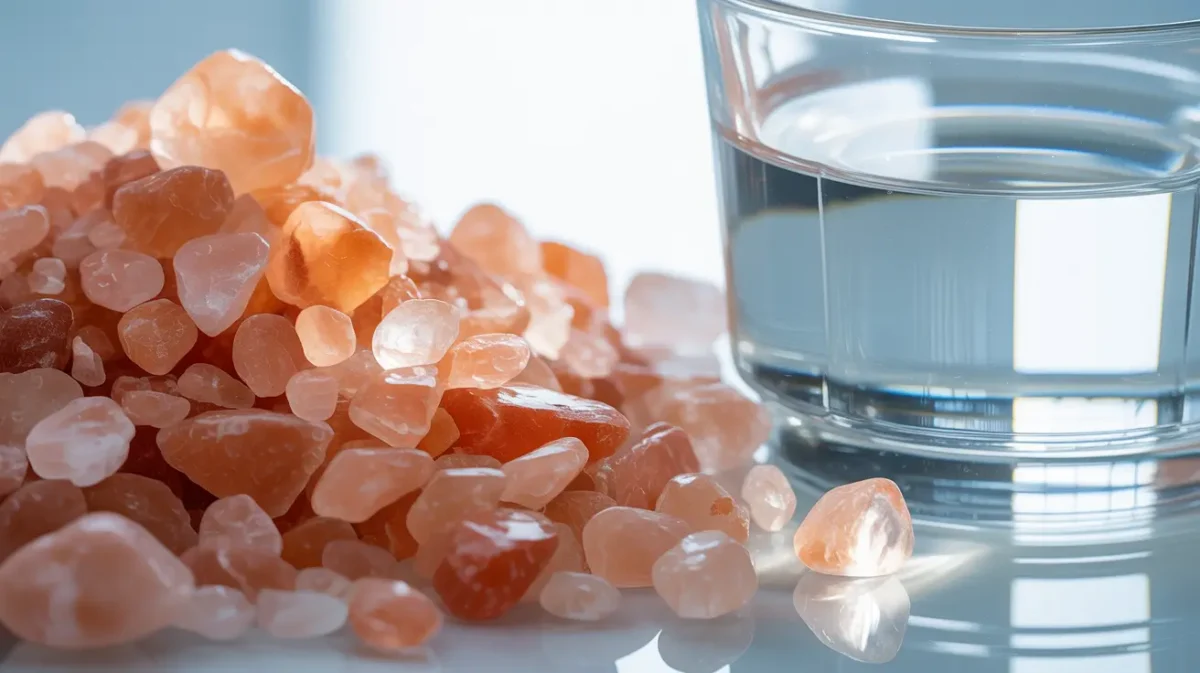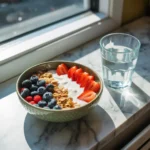introduction
Dr Ania Jastreboff Pink Salt Trick — the phrase that’s been dominating TikTok, YouTube Shorts, and even morning talk shows. You’ve probably seen influencers swirling pink Himalayan salt into warm water, claiming it’s the “secret” behind overnight fat loss and glowing skin. But before you grab a glass and join the viral wave, let’s pause for a reality check.
Here’s the truth: Dr. Ania Jastreboff, a renowned Yale Medicine obesity specialist, never promoted this so-called “pink salt trick.” In fact, her name has been misused in AI-generated videos and fake doctor endorsements — a growing issue in the health misinformation world.
This article separates fact from fiction. We’ll dive into what the pink salt water hack actually is, why Dr. Jastreboff’s name got pulled into the chaos, and what science says about it. Spoiler alert: there’s no magic mineral hiding in your salt shaker.
Before you sprinkle that pink salt into your bedtime drink, discover great ideas like our Himalayan Pink Salt Recipe Diet Plan — a safer, balanced approach rooted in real nutrition. Let’s unpack the truth behind one of TikTok’s biggest health myths and find out what really works according to science.
PrintDr Ania Jastreboff Pink Salt Trick: Viral Myth or Science-Backed Truth?
This viral TikTok trend claims pink Himalayan salt in warm water melts fat overnight — but Dr. Ania Jastreboff never endorsed it. Here’s what science and real medicine actually say about the pink salt trick, deepfakes, and GLP-1 weight loss myths.
- Prep Time: 5 minutes
- Cook Time: 0 minutes
- Total Time: 5 minutes
- Yield: 1 glass 1x
- Category: Health Myth Exposed
- Method: Mixing
- Cuisine: Viral Trends
Ingredients
- 1 pinch Himalayan pink salt
- 1 cup warm water
- Optional: lemon juice or apple cider vinegar (for taste only)
- Medical facts from Yale Medicine
- Scientific research on GLP-1 regulation
- Critical thinking and media literacy
Instructions
- Mix a pinch of pink Himalayan salt into a glass of warm water. Stir well. (Optional: add lemon or vinegar for flavor.)
- Pause before drinking. Ask: Is this medically supported or just viral hype?
- Understand that Dr. Ania Jastreboff did NOT recommend this trick. Her name was used in AI-generated fake videos.
- Review official sources from Yale Medicine and global health organizations.
- Learn how GLP-1 hormones really work through approved therapies like Ozempic and Wegovy.
- Note the risks: Excess sodium intake can raise blood pressure, harm kidneys, and create false expectations.
- Replace viral hacks with evidence-based habits: hydration, movement, balanced diet, and sleep.
- Use tools to verify fake doctor videos: check credentials, reverse-search content, and avoid AI scams.
Notes
There’s no magic in pink salt — only science can guide sustainable health. Dr. Jastreboff’s real work focuses on GLP-1 treatments, not detox hacks. Always verify before trying any health trend.
Nutrition
- Serving Size: 1 glass
- Calories: 0
- Sugar: 0g
- Sodium: 400mg
- Fat: 0g
- Saturated Fat: 0g
- Unsaturated Fat: 0g
- Trans Fat: 0g
- Carbohydrates: 0g
- Fiber: 0g
- Protein: 0g
- Cholesterol: 0mg
Keywords: pink salt trick, dr ania jastreboff, tiktok health myth, GLP-1 weight loss, fake doctor video, hydration myth
What Is the “Pink Salt Trick” and Why Did It Go Viral?
The Basic Recipe Behind the Pink Salt Craze
The pink salt trick became one of TikTok’s most talked-about “health hacks.” The formula is simple — dissolve a pinch of Himalayan pink salt into warm water, sometimes adding lemon or apple cider vinegar. Influencers say it burns fat overnight, activates hormones, and flushes toxins. But here’s the catch: there’s no scientific proof supporting any of those claims. It’s a viral hydration myth dressed up as nutrition advice.
Why the Pink Salt Trick Spread So Fast
This trend didn’t just rely on promises; it relied on aesthetics. Videos featuring soft pink tones, glass jars, and minimal morning setups became Pinterest-perfect wellness content. Viewers were drawn in by its calm, clean look — and the false notion that it was “doctor-approved.” On social media, visuals and authority triggers matter more than accuracy.
The “Doctor-Approved” Trap
Many posts mentioned “Dr. Ania Jastreboff” or showed AI-generated clips that appeared to validate the trick. These visuals gave the illusion of medical credibility — which accelerated the trend’s spread. In reality, the connection was entirely fabricated. Before trying it yourself, learn the real science and safer hydration alternatives in our Pink Salt Diet Weight Loss article.
Why Dr Ania Jastreboff’s Name Is Linked to the Trend
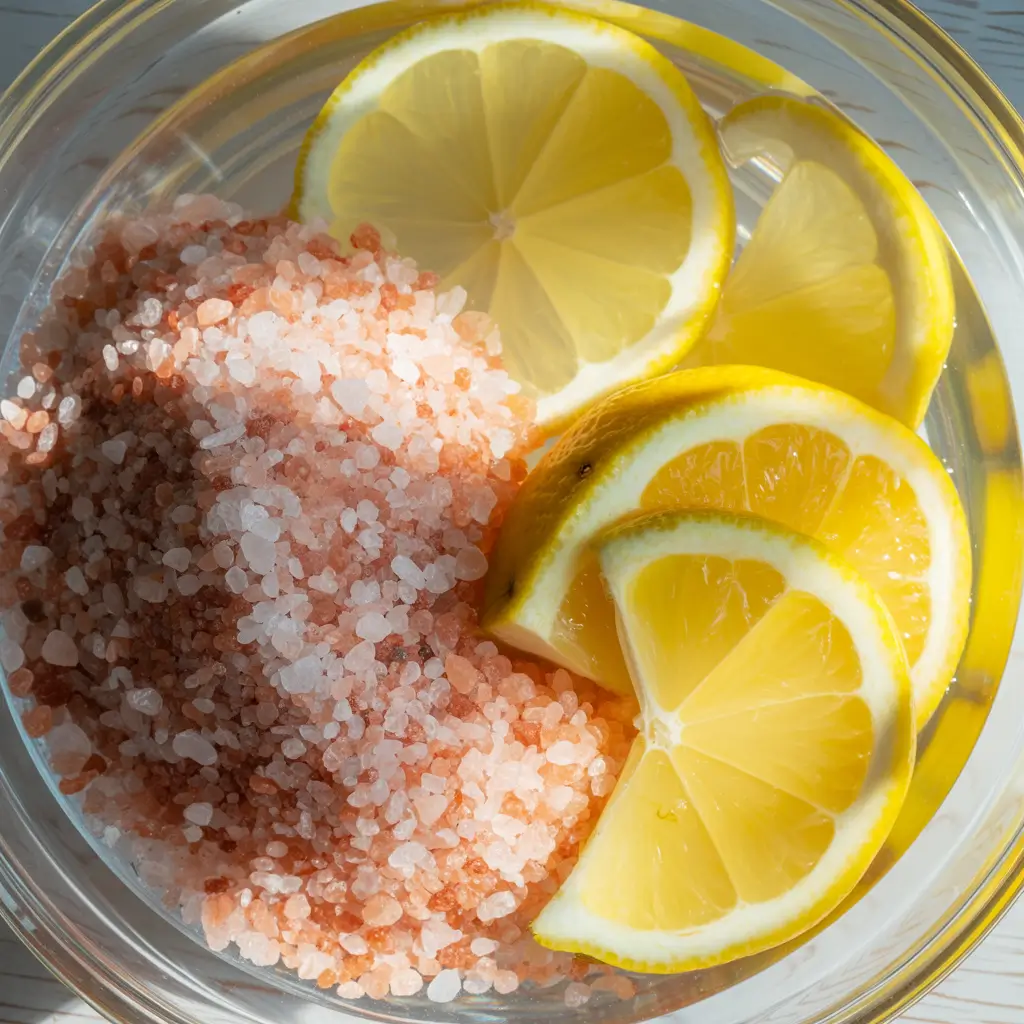
Who Is Dr. Ania Jastreboff?
Dr. Ania Jastreboff is a Yale Medicine endocrinologist and obesity expert known for groundbreaking research on GLP-1 medications like Ozempic and Wegovy. She focuses on evidence-based metabolic treatments — not social media trends. Her name carries scientific authority, which made it an easy target for content creators seeking credibility.
How AI Deepfakes Hijacked Her Reputation
Around mid-2024, AI-generated videos began circulating across TikTok and Instagram. These deepfakes used her likeness and voice to promote the pink salt diet, claiming it was a “natural GLP-1 booster.” The result? Millions believed she endorsed the trick. Yet these videos were completely fabricated, using advanced voice cloning and face-mapping tools.
Yale’s Official Clarification
Yale Medicine publicly confirmed that Dr. Jastreboff has never endorsed or used the pink salt trick. Her actual research focuses on clinical obesity management and the biology of weight regulation — not quick fixes. This case highlights how misinformation can exploit trusted medical figures.
To understand exactly how this false connection started and why it spread, check out our full investigation on the Dr Ania Pink Salt Trick.
What Does Science Actually Say About the Pink Salt Trick?
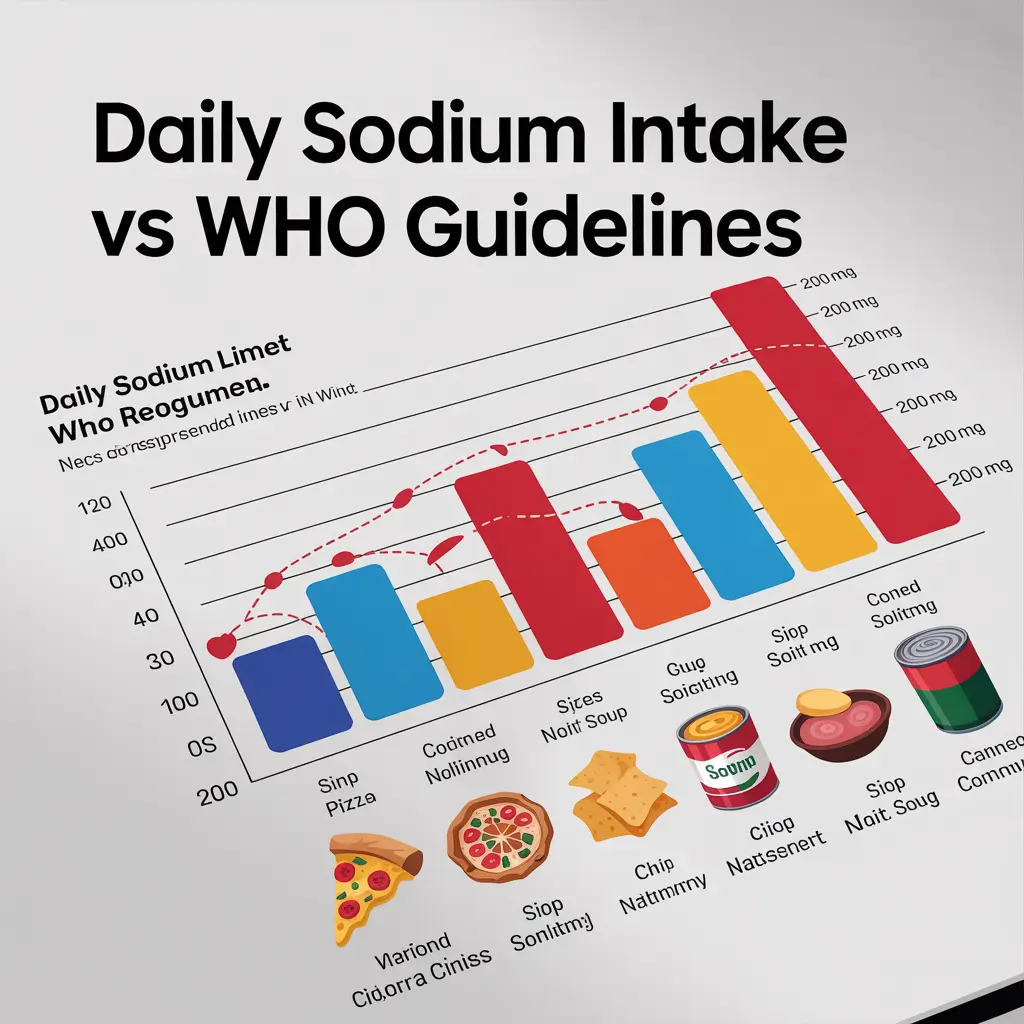
No Clinical Evidence Supports the Pink Salt Weight Loss Claims
Despite what viral videos suggest, no scientific studies confirm that drinking Himalayan salt water triggers weight loss, boosts GLP-1 hormones, or “detoxifies” the body. The Dr Ania Jastreboff Pink Salt Trick trend misinterprets real endocrinology. GLP-1 regulation occurs through metabolic pathways — not by ingesting trace minerals found in salt. These claims sound scientific, but they collapse under scrutiny.
The Hydration Myth: Why It Feels Like It Works
Many people believe the trick works because they notice quick “results” such as less bloating or minor weight drops. However, those effects stem from temporary fluid shifts, not fat loss. Adding salt can momentarily increase water retention, altering body weight on the scale — giving the illusion of progress. True hydration balance comes from water and electrolytes in proper ratios, not excess sodium intake.
Sodium Overload and Hidden Health Risks
Himalayan salt does contain minerals like potassium, magnesium, and calcium, but in microscopic quantities. To reach any measurable nutrient benefit, one would have to consume unsafe levels of sodium. The World Health Organization (WHO) recommends keeping sodium under 2,300 mg per day yet a teaspoon of pink salt provides roughly 2,000 mg. Over time, this can elevate blood pressure, strain kidneys, and increase heart-related risks.
In short, the pink salt trick is a hydration myth disguised as science. The only “detox” it offers is to your skepticism.
Don’t miss our detailed breakdown in the Pink Salt Diet 4 Ingredients guide, where we analyze what’s actually in this viral drink and what your body really needs for healthy hydration.
How TikTok Made the Pink Salt Trick Global
The Psychology of “Simple Tricks” and Viral Authority
The rise of the Dr Ania Jastreboff Pink Salt Trick shows how easily people are drawn to effortless health hacks — especially when they appear to come from medical experts. TikTok thrives on snackable advice: a short video, a confident voice, and an easy-to-remember ritual. When a tip sounds both scientific and simple, users share it without thinking twice. The platform’s algorithm rewards watch time and engagement, not accuracy, which helps misinformation thrive.
AI Deepfakes and the Replication Loop
Once the first fake video of “Dr. Jastreboff” began circulating, TikTok’s algorithm pushed it into millions of feeds. Other creators jumped on the trend, remixing, reacting, and re-uploading the clip. Within days, the same AI-generated face appeared in hundreds of videos, all repeating the same fabricated quote. This replication loop blurred the line between truth and fiction. It’s a textbook example of how synthetic media can distort public perception and build false authority online.
The Placebo and Behavior Shift Effect
Interestingly, some users reported “real” results from the trick — feeling slimmer, more energetic, or less bloated. But those effects often stemmed from behavioral changes, not the salt. Drinking more water, reducing sugary beverages, or eating earlier can naturally affect hydration and digestion. The salt itself is irrelevant; the routine is what drives minor benefits.
Looking for inspiration? Try our protein-packed alternatives instead — check out the Protein Ice Cream Whole Foods recipe for a genuinely healthy treat that delivers real nutrition, not false hope.
What Actually Works for Weight Loss (Based on Dr. Jastreboff’s Research)
The GLP-1 Pathway and Real Science Behind Metabolic Health
While the Dr Ania Jastreboff Pink Salt Trick claims to “activate GLP-1 hormones,” science tells a different story. GLP-1 (glucagon-like peptide-1) is a natural hormone that regulates appetite, insulin release, and glucose levels. It’s central to the success of medically approved treatments like Ozempic and Wegovy, which Dr. Jastreboff helped research. These therapies mimic GLP-1’s natural effects in the body — reducing hunger and improving metabolic function — something no salt water concoction can achieve. Unlike social media hacks, these treatments are peer-reviewed, clinically tested, and prescribed under medical supervision.
Sustainable Habits Backed by Evidence
Beyond medication, Dr. Jastreboff emphasizes realistic, science-based lifestyle strategies: balanced nutrition, consistent movement, quality sleep, and proper hydration. Small daily habits — like resistance training, reducing processed carbs, and managing stress — have a proven cumulative impact on metabolism and weight regulation. Unlike the viral salt hack, these changes are sustainable and measurable over time.
Building a Metabolism That Lasts
The truth is, there are no shortcuts. Real metabolic health relies on consistency, not quick fixes. When you follow evidence-backed methods, you improve hormone balance, muscle preservation, and energy metabolism naturally. Replacing salt myths with real nutrition knowledge leads to long-term results — not viral disappointment.
See how gender and physiology play a role in healthy weight management with our expert review of the Pink Salt Diet for Men, featuring diet science that actually aligns with Dr. Jastreboff’s medical insights.
Who Should Avoid the Pink Salt Drink
The Hidden Risks Behind a “Natural” Trend
Despite its harmless image, the Dr Ania Jastreboff Pink Salt Trick can be risky for certain people. Himalayan salt might look healthy, but it’s still sodium chloride — and too much sodium can disrupt your body’s fluid balance. For those with existing medical conditions, even small “hacks” like this can have serious consequences. What looks like a harmless hydration trend can actually worsen underlying health problems, especially when followed without medical supervision.
H3 – People with Blood Pressure or Kidney Issues
Anyone with hypertension, kidney disease, or heart problems should avoid the pink salt drink entirely. Consuming excess sodium can cause fluid retention, making the heart work harder and raising blood pressure levels. It can also strain kidneys, which are responsible for filtering sodium from your bloodstream. The same warning applies to people on low-sodium diets or taking medication for water retention — adding salt water may directly counteract your treatment plan.
Pregnancy, Elderly, and Sensitivity Considerations
Pregnant women, older adults, and those prone to dehydration should steer clear of the salt trick. Extra sodium can increase swelling and impact electrolyte balance, while older adults often experience reduced kidney efficiency. Staying hydrated with regular water, fruit-infused drinks, or potassium-balanced electrolytes is far safer.
For better, body-friendly ways to hydrate and nourish yourself, discover our seasonal Alani Nu Witch’s Brew Pumpkin Cream — a healthy, comforting option that supports real energy balance without overloading your system with sodium.
How to Spot Fake Doctor Videos & AI Scams
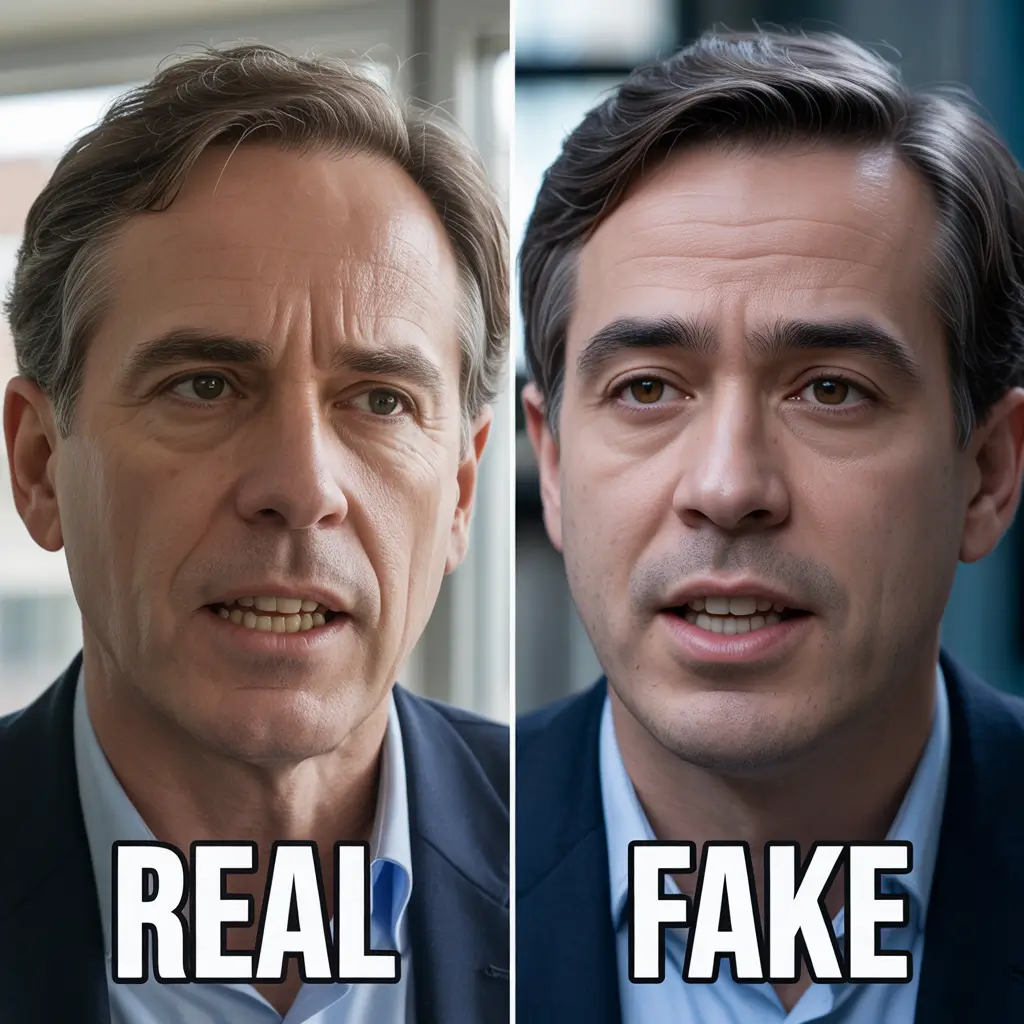
Why Health Scams Thrive on Social Media
The rise of the Dr Ania Jastreboff Pink Salt Trick shows how powerful fake authority can be. On platforms like TikTok and Instagram, viewers are constantly exposed to polished, attention-grabbing short videos that appear credible yet frequently rely on little to no real scientific evidence. Scammers understand this psychological trick — when advice seems to come from a “doctor,” it instantly feels trustworthy. This makes medical misinformation spread faster than verified facts, especially when mixed with wellness buzzwords like “detox” or “hormone reset.”
How to Verify if a Doctor Video Is Real
Before believing any “doctor-endorsed” trend, take a minute to verify it. Start by checking if the creator’s account is verified (blue badge) and connected to a legitimate institution or clinic. Search their full name on Google Scholar or the website of their affiliated hospital. Real doctors have traceable credentials and publications. Be cautious of videos promoting supplements or miracle drinks with affiliate links — that’s a major red flag. Always double-check by searching “[Dr. Name] + official site” to confirm authenticity.
Tools to Detect AI-Generated Content
AI deepfakes have become alarmingly realistic. Tools like Hive Moderation or Deepware Scanner can analyze videos for AI patterns or manipulation. Reverse image search also helps identify reused visuals. When something feels “off” — voice tone, lighting, or lip-syncing — trust your gut.
To see a real-world example of how AI clones spread false medical endorsements, explore our investigative post on the Pink Salt Hack Diet, where we expose how synthetic videos fueled one of TikTok’s biggest health hoaxes.
FAQ – Dr Ania Jastreboff Pink Salt Trick (Google PAA Optimized)
Does the pink salt trick really work for weight loss?
No. There’s no clinical evidence proving that Himalayan pink salt water promotes fat loss or metabolism. The idea that salt “activates GLP-1 hormones” is biologically false. True metabolic regulation comes from nutrition, activity, and approved medical treatments — not salt drinks.
Source: WHO Sodium Guidelines, 2024
Did Dr Ania Jastreboff recommend the pink salt trick?
No. Dr. Jastreboff never supported or mentioned this trend. Videos using her name or face are AI deepfakes, confirmed as fake by Yale Medicine. She studies clinical obesity treatments, not viral “detox hacks.”
Source: Yale Medicine – Dr. Ania Jastreboff
H3 – What happens if you drink salt water daily?
Regular salt water intake raises sodium levels, which can cause bloating, dehydration, and high blood pressure. It’s especially dangerous for people with kidney or heart issues.
Source: WebMD – Himalayan Salt Facts
Is Himalayan salt healthier than table salt?
Not really. Both are about 98% sodium chloride. Pink salt’s minerals are too minimal to change health outcomes, making it more marketing than medicine.
Source: Verywell Health – Pink Salt Trick, 2025
How can you spot fake doctor videos?
Look for verified accounts, institutional links, and natural speech. Fake videos often show stiff lips or robotic tones. Use tools like Deepware Scanner to confirm.
Source: BBC Deepfake Report, 2024
Final Verdict – The Pink Salt Trick Exposed
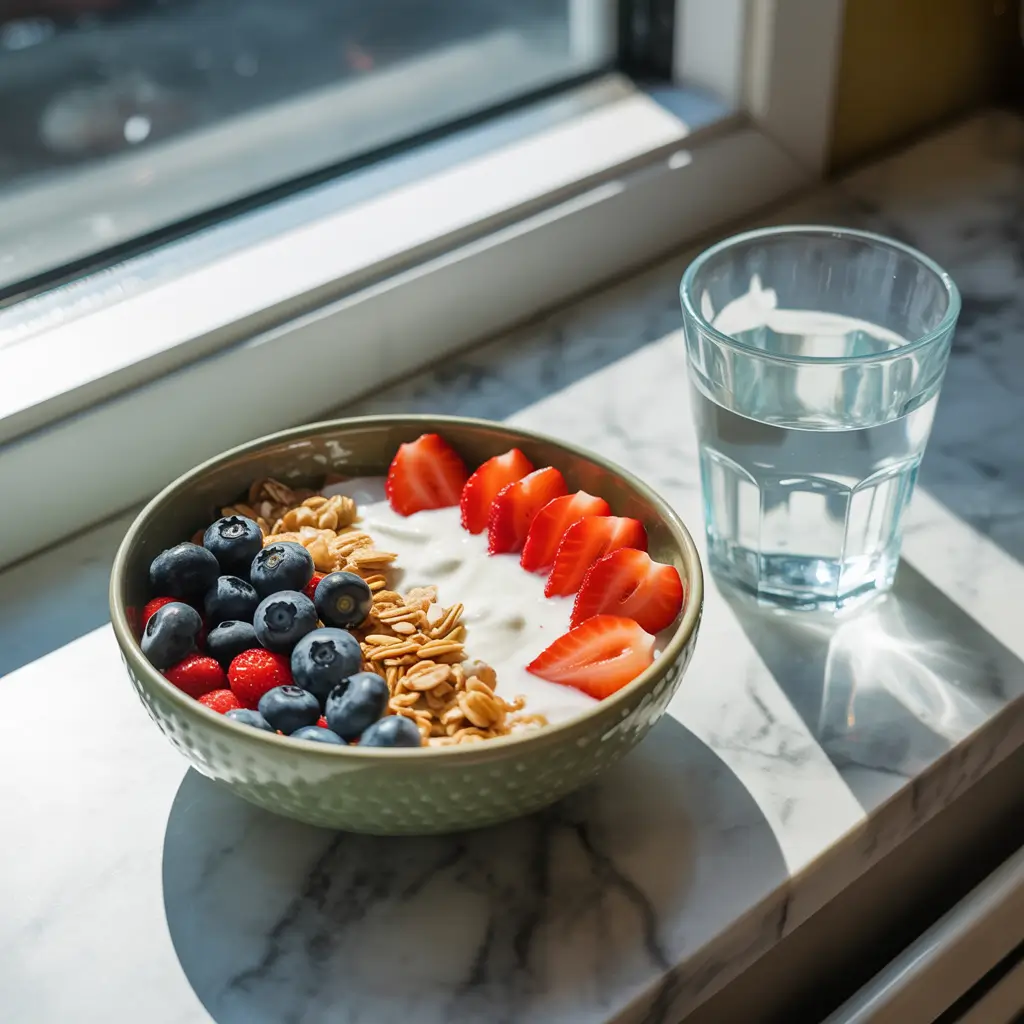
What the Viral Trend Gets Wrong
The Dr Ania Jastreboff Pink Salt Trick gained traction because it promised effortless weight loss and “doctor-approved” results. But beneath the soft pink visuals and calm morning routines lies a pattern of misinformation. The trick relies on claims with no medical or clinical foundation, only the illusion of credibility created by AI deepfakes and influencer marketing.
What Dr. Jastreboff Actually Stands For
Dr. Jastreboff is a Yale Medicine endocrinologist whose research focuses on evidence-based obesity treatment, not social media hacks. She has publicly stated she does not support the pink salt diet or any “natural GLP-1 activator.” Her work centers on validated therapies like Ozempic and Wegovy, which are proven to affect metabolism safely — unlike the unverified salt water claims spreading online.
The Science-Backed Takeaway
Himalayan salt may look appealing, but it’s still sodium chloride with minimal nutritional value. Too much can raise blood pressure, strain kidneys, and increase dehydration risk. Real metabolic health depends on balanced nutrition, proper hydration, and consistent habits, not viral shortcuts.
For more insights on how media shapes wellness myths, read our in-depth piece on the Oprah Pink Salt Diet controversy. And for fact-based health guidance, join our Facebook wellness community — where evidence always beats hype.

